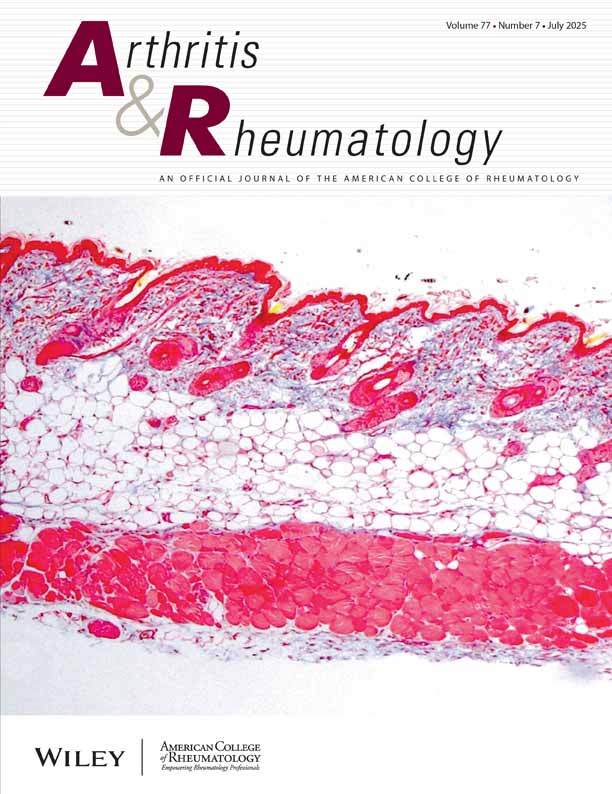The heritable determinants of cartilage oligomeric matrix protein
Abstract
Objective
Cartilage oligomeric matrix protein (COMP) is a cartilage matrix macromolecule. The protein is detectable in serum and has been investigated as a biomarker of osteoarthritis (OA). An association between COMP and OA has been shown, yet the precise factors governing serum levels of COMP remain unclear. The aim of this study was to determine whether genetic factors influence serum levels of COMP.
Methods
A classic twin study was conducted using COMP levels in serum obtained from healthy female twin volunteers. COMP levels were determined by an inhibition enzyme-linked immunosorbent assay method. The heritability of COMP was determined by comparing correlation among 160 monozygotic and 349 dizygotic twin pairs. Data on potential confounding factors, including age, body mass index, and the presence of OA as assessed by hand, hip, and knee radiographs, were included in the analysis.
Results
Serum levels of COMP showed a correlation of 0.72 (95% confidence interval [95% CI] 0.65–0.80) among monozygotic twin pairs and 0.47 (95% CI 0.39–0.55) in dizygotic pairs. This equated to an estimated heritability for COMP of 40% (95% CI 20–60%). Although age and body mass index were found to be significantly associated with COMP in regression analysis, taking the effects of these factors into account did not influence the estimate of heritability.
Conclusion
This study showed that heritable factors influence serum levels of the cartilage matrix biomarker COMP. Together with other published data, the results suggest that genetic factors operate at an early stage in the etiologic pathways that influence the development of radiographically discernible OA.




